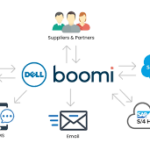In today’s data-driven world, the ability to collect accurate and unbiased information is more crucial than ever. Businesses rely on data collection services not just for insights but for making strategic decisions that can shape their future. Yet, this process isn’t without its challenges. Data collection can be fraught with pitfalls that lead to skewed results and misguided interpretations. Understanding these challenges is the first step towards overcoming them.
From bias in survey design to inaccuracies in sampling methods, the road to reliable data often has many bumps along the way. In this blog post, we’ll explore what data collection entails, why it matters so much in achieving meaningful outcomes, and how organizations can navigate through common obstacles effectively. Let’s dive into the complexities of collecting quality data and discover proven strategies for success!
What is Data Collection?
Data collection is the systematic process of gathering information to analyze and interpret. It serves as the foundation for decision-making across various fields, from business to healthcare.
This practice can take many forms, including surveys, interviews, observations, and digital tracking. Each method has its strengths and weaknesses depending on the objectives at hand.
In essence, data collection involves both quantitative and qualitative approaches. Quantitative data refers to numerical values that can be measured objectively. In contrast, qualitative data captures subjective experiences and insights through written or verbal responses.
The goal is always to collect relevant information that accurately reflects a situation or phenomenon. This understanding allows organizations to develop targeted strategies based on real-world conditions rather than assumptions alone.
The Importance of Accurate and Unbiased Data
Accurate and unbiased data serve as the backbone for decision-making processes in various fields. Whether in business, healthcare, or social sciences, the consequences of relying on flawed data can be significant.
When organizations base their strategies on misleading information, they risk wasting resources and missing opportunities. Unbiased data fosters trust among stakeholders and informs better practices.
Moreover, accurate data enhances predictive analytics. This capability allows companies to anticipate trends and adapt accordingly. It’s not just about gathering numbers; it’s about understanding what those numbers truly represent.
In research contexts, bias can skew results dramatically. This may lead to incorrect conclusions that affect policies or public perception. Ensuring accuracy helps safeguard integrity in findings across disciplines.
Prioritizing unbiased data collection is crucial for fostering innovation and accountability in any operation aiming to make informed decisions.
Common Challenges in Data Collection
Data collection is fraught with challenges that can compromise the integrity of results. One major hurdle is respondent bias, where personal beliefs or experiences skew responses. This often leads to misleading data.
Another issue arises from sample size and selection. Too few participants can render findings statistically insignificant. Additionally, a non-representative sample may lead to conclusions that don’t apply to the broader population.
Technological limitations also pose a challenge. Not all tools are equipped for comprehensive data capture, which can result in missing information.
Time constraints frequently affect the thoroughness of data gathering efforts. Rushed processes often overlook crucial details, leading to inaccuracies that undermine the entire study’s credibility.
Overcoming Biases in Data Collection
- Bias in data collection can skew results and lead to faulty conclusions.
- To overcome this, it’s crucial to start with a diverse team. Different perspectives help identify potential biases early on.
- Next, consider using randomized sampling methods. This approach gives every individual an equal chance of being selected, reducing selection bias significantly.
- Moreover, implementing blind studies can further mitigate influence from preconceived notions.
- When researchers are unaware of the data grouping, their objectivity improves.
- Regular training sessions about bias awareness for your team also play a vital role.
- Keeping everyone informed fosters a culture of critical thinking and vigilance against inherent biases.
- Maintaining transparency throughout the process allows for external scrutiny and insights that may highlight unrecognized biases.
- By adopting these strategies, organizations can enhance the integrity of their data collection service greatly.
Methods for Ensuring Accuracy in Data Collection
Ensuring accuracy in data collection is crucial for reliable outcomes. One effective method is to implement standardized protocols. This means using consistent techniques across all data points to minimize variability.
Regular training sessions for staff can also enhance accuracy. Well-informed personnel are less likely to make errors, which directly impacts the quality of collected data.
Utilizing technology plays a significant role as well. Automated tools can help reduce human error and streamline processes, ensuring more precise results.
Data validation checks should be an integral part of your strategy. These checks identify inconsistencies or anomalies that could skew results before they become problematic.
Employing multiple sources for cross-verification adds another layer of reliability. By comparing different datasets, you can confirm findings and bolster confidence in your conclusions.
Real-World Examples of Successful Data Collection Strategies
- One impressive example comes from healthcare.
- Hospitals increasingly use data collection services to track patient outcomes and optimize treatments. By analyzing large datasets, they identify effective therapies while minimizing adverse effects.
- Retail giants like Amazon utilize customer behavior data for personalized marketing. They gather insights through purchase history and browsing patterns, tailoring recommendations that enhance user experience and drive sales.
- In the education sector, institutions collect student performance data to improve curricula.
- By examining trends over time, educators adapt teaching methods to better meet individual learning needs.
- Nonprofits leverage data collection strategies to measure impact effectively. They track metrics on community engagement and program success, refining their approaches based on evidence rather than assumptions.
- These examples illustrate the diverse applications of efficient data collection practices across industries.
- Each scenario highlights how strategic gathering of information leads to informed decisions and tangible benefits.
Conclusion
Data collection is a vital component of research and decision-making processes across various industries. The challenges in this area, particularly concerning bias and accuracy, can significantly hinder effective outcomes. Addressing these issues not only enhances the reliability of data but also contributes to informed decisions that propel businesses forward.
Accurate and unbiased data serves as the foundation for strategies that drive success. By recognizing common challenges—such as selection bias or inaccurate reporting—you can take actionable steps to mitigate their impact on your findings.
Employing robust methodologies helps ensure that collected data reflects reality more clearly. Techniques such as random sampling, validated survey instruments, and rigorous training for those collecting data can lead to improved results.
Real-world examples showcase successful approaches in overcoming these challenges. Organizations leveraging advanced technology have transformed their data collection services into streamlined operations with enhanced accuracy.
Navigating the complexities of data collection requires commitment and adaptability. As businesses continue to rely on accurate insights, prioritizing effective strategies will pave the way for sustained growth and innovation.



